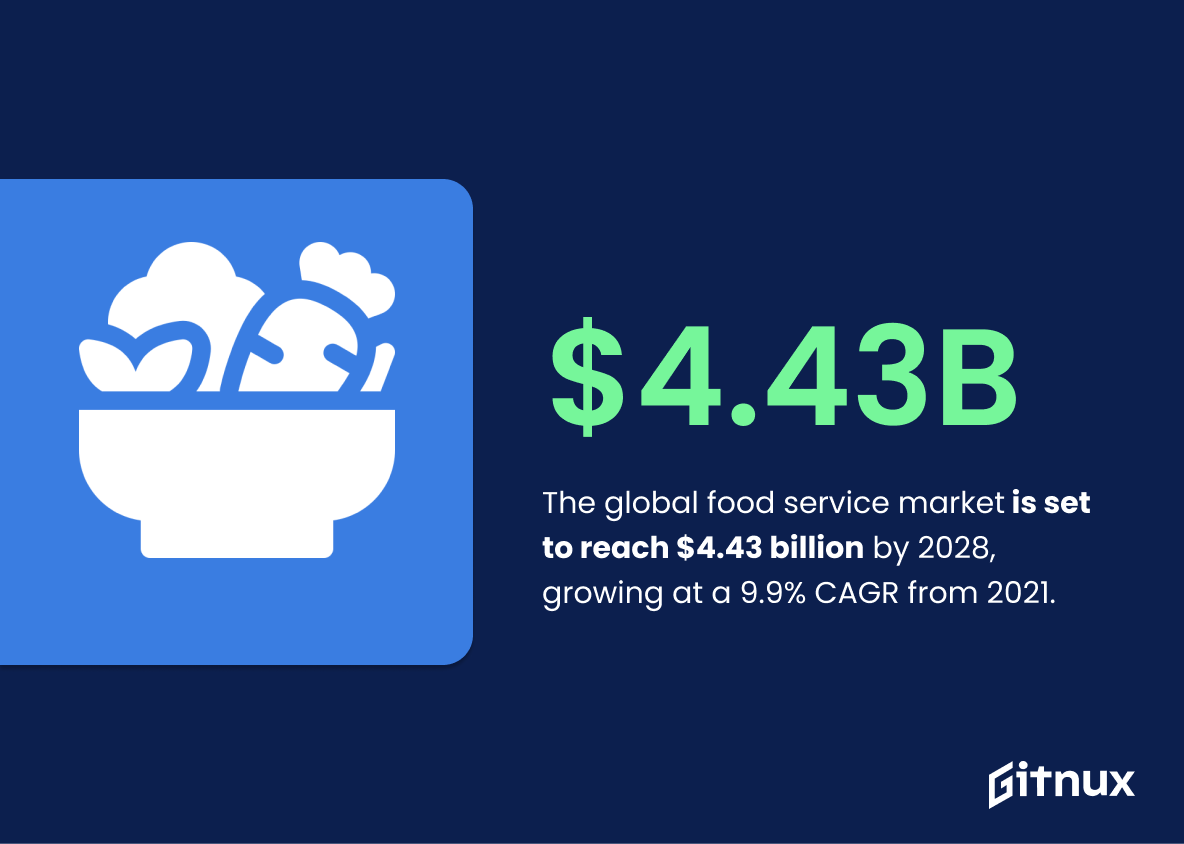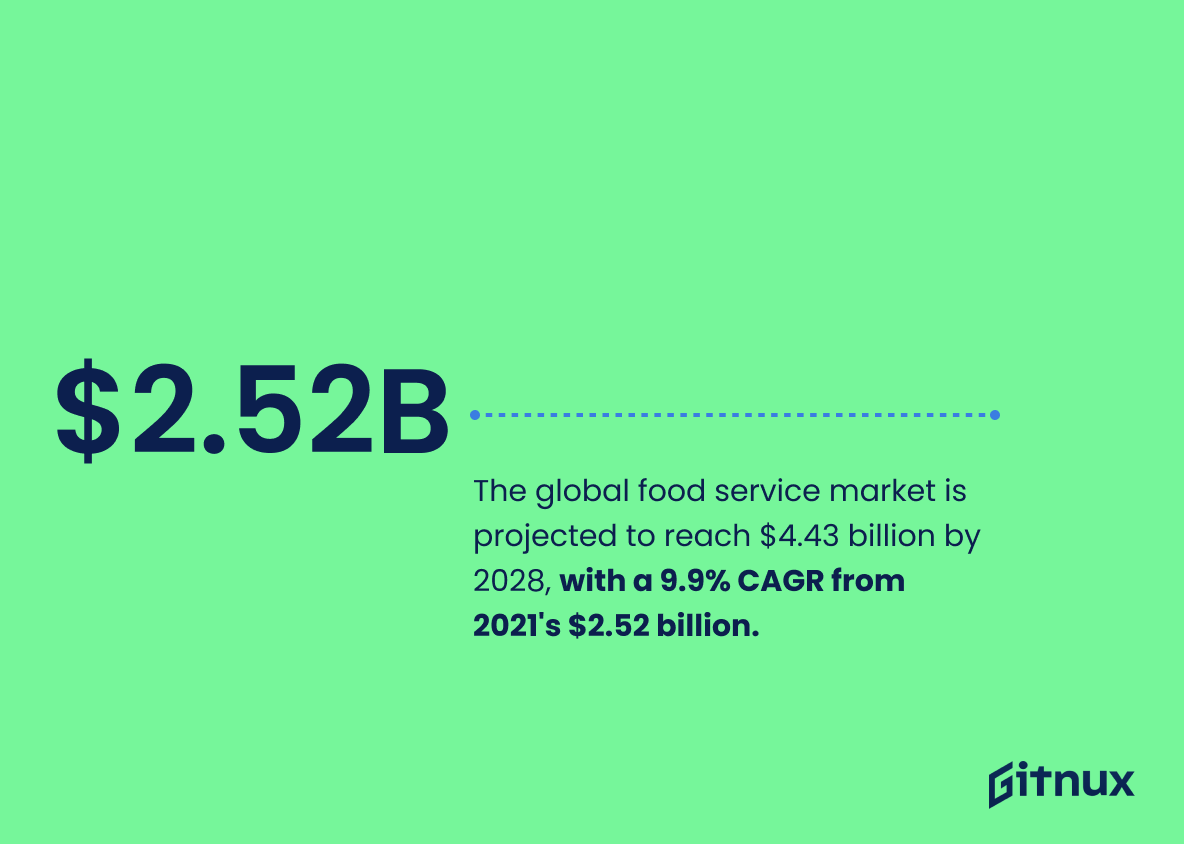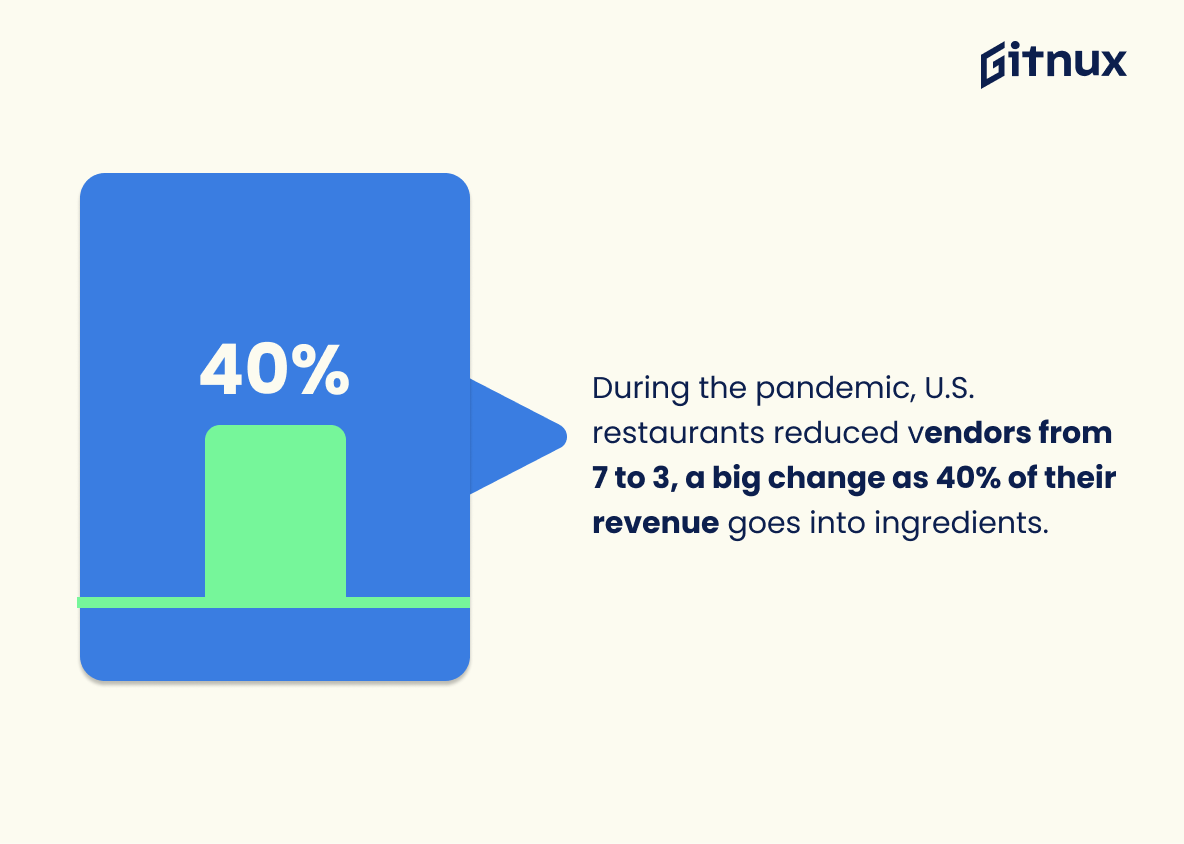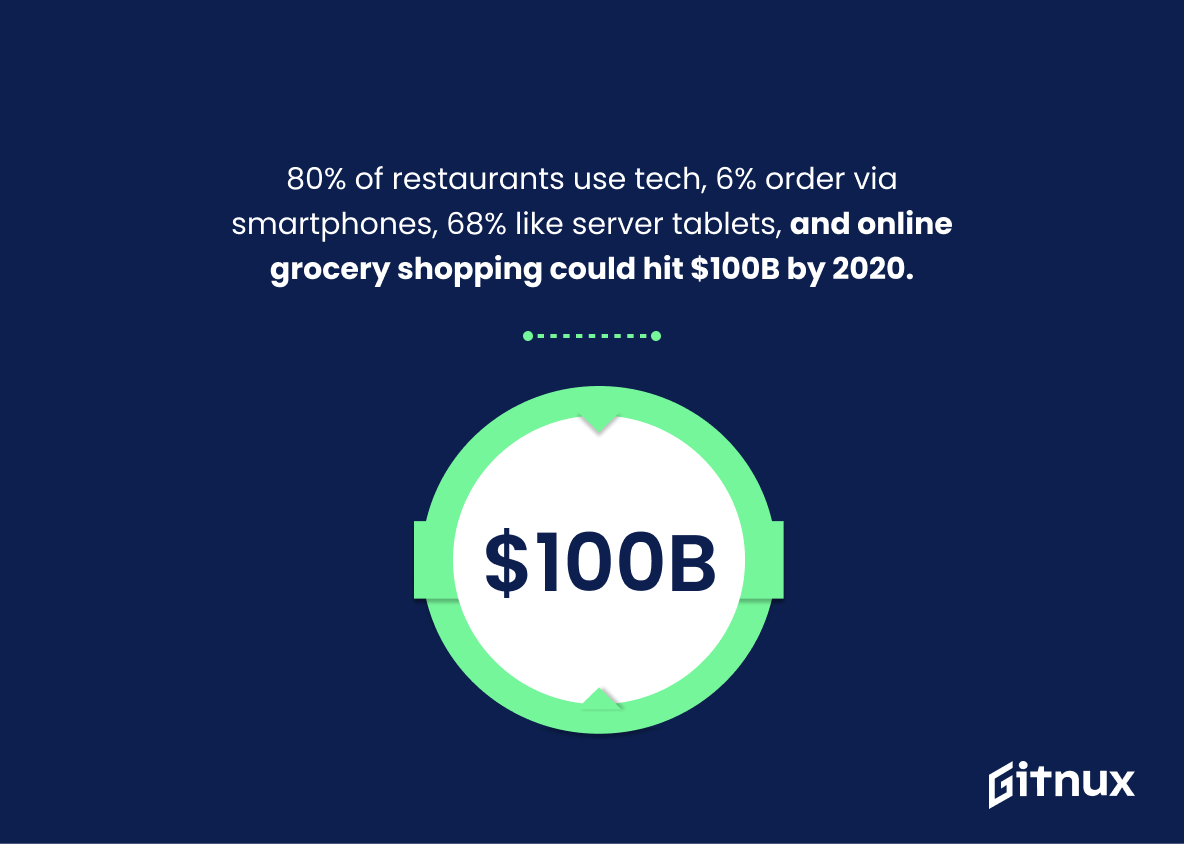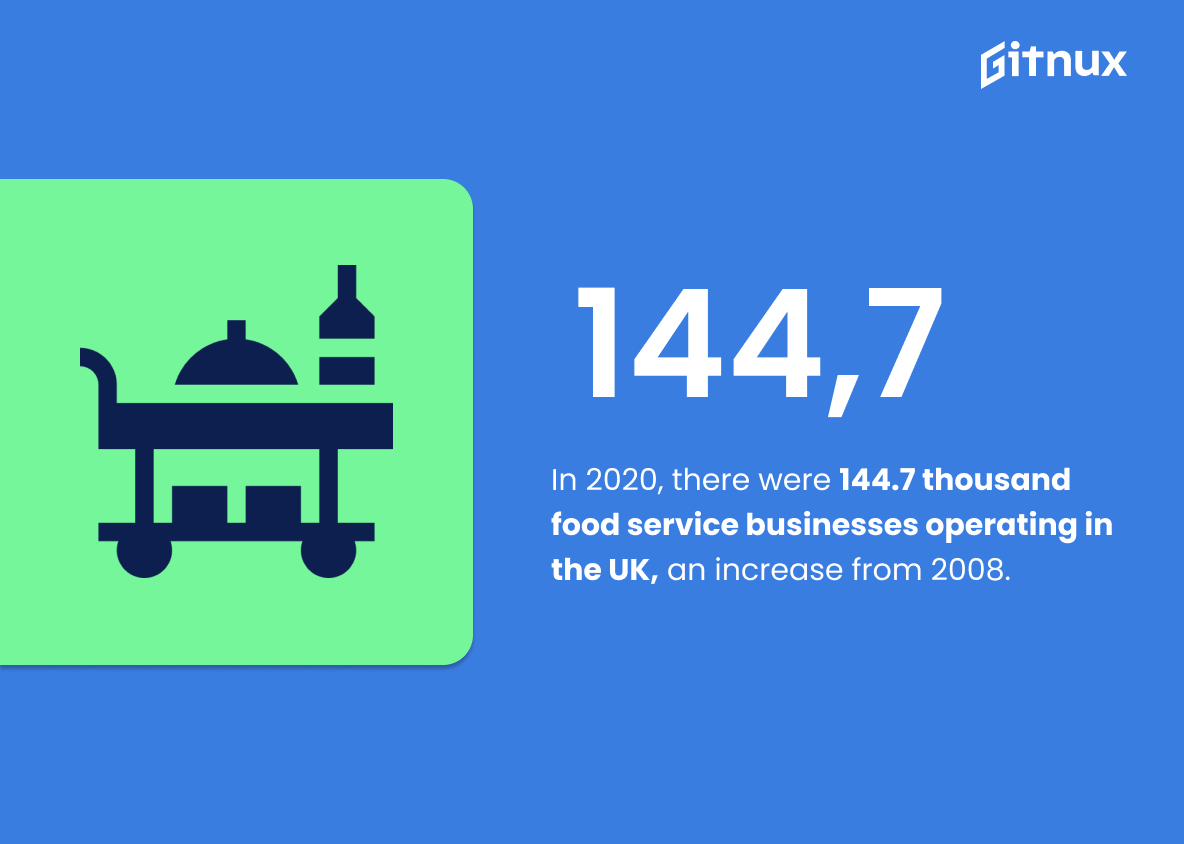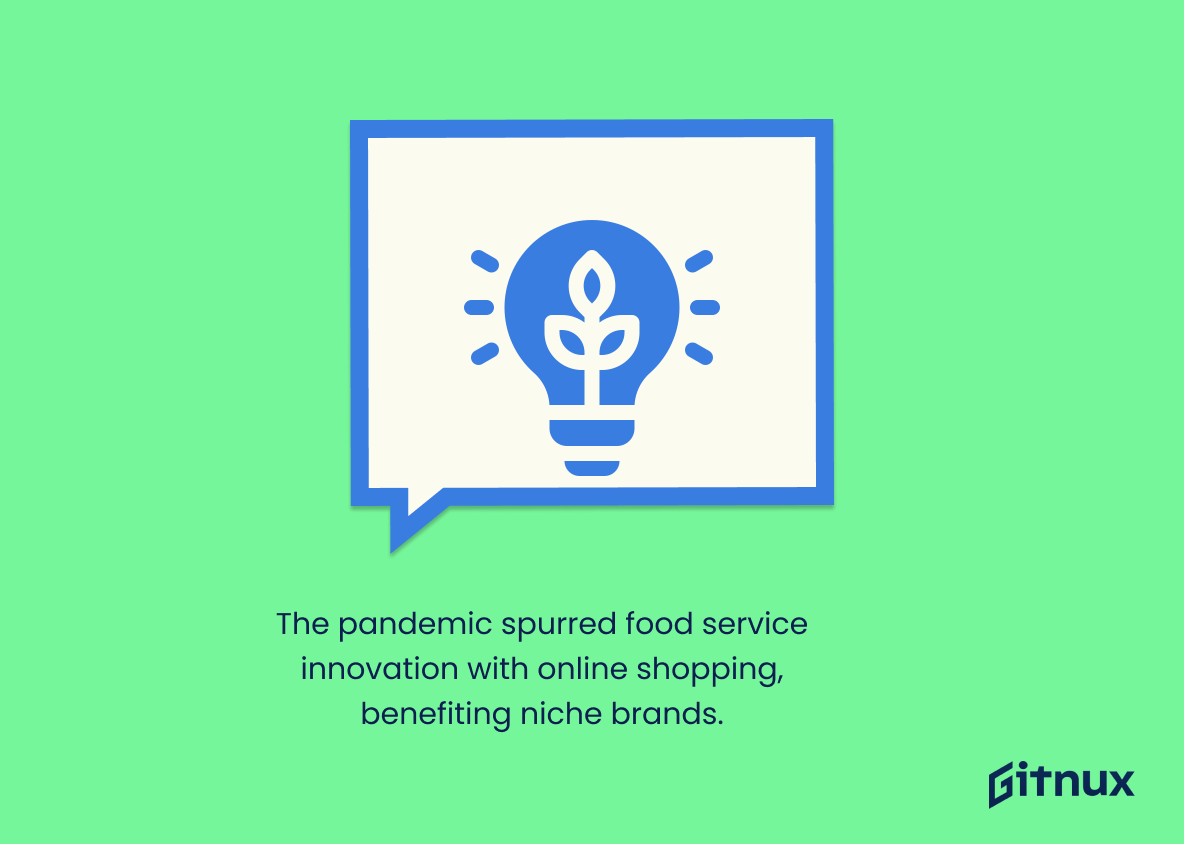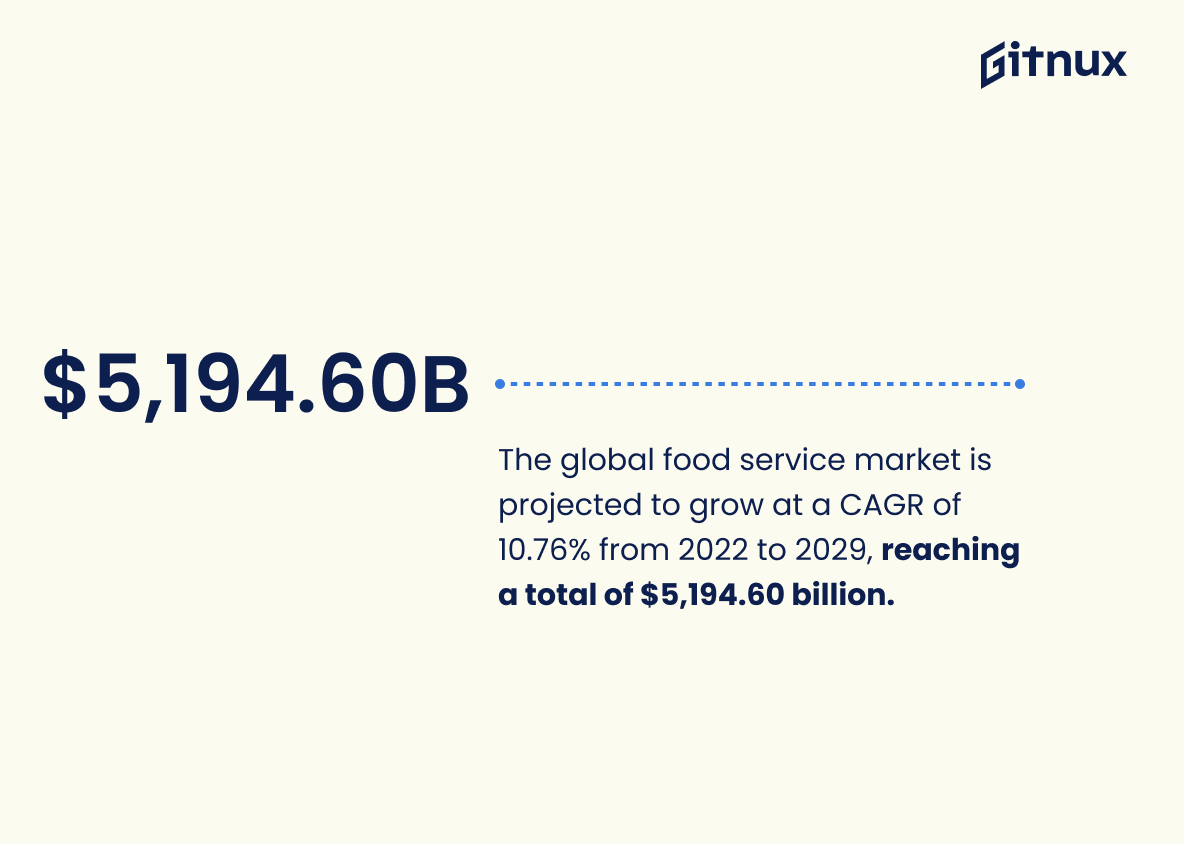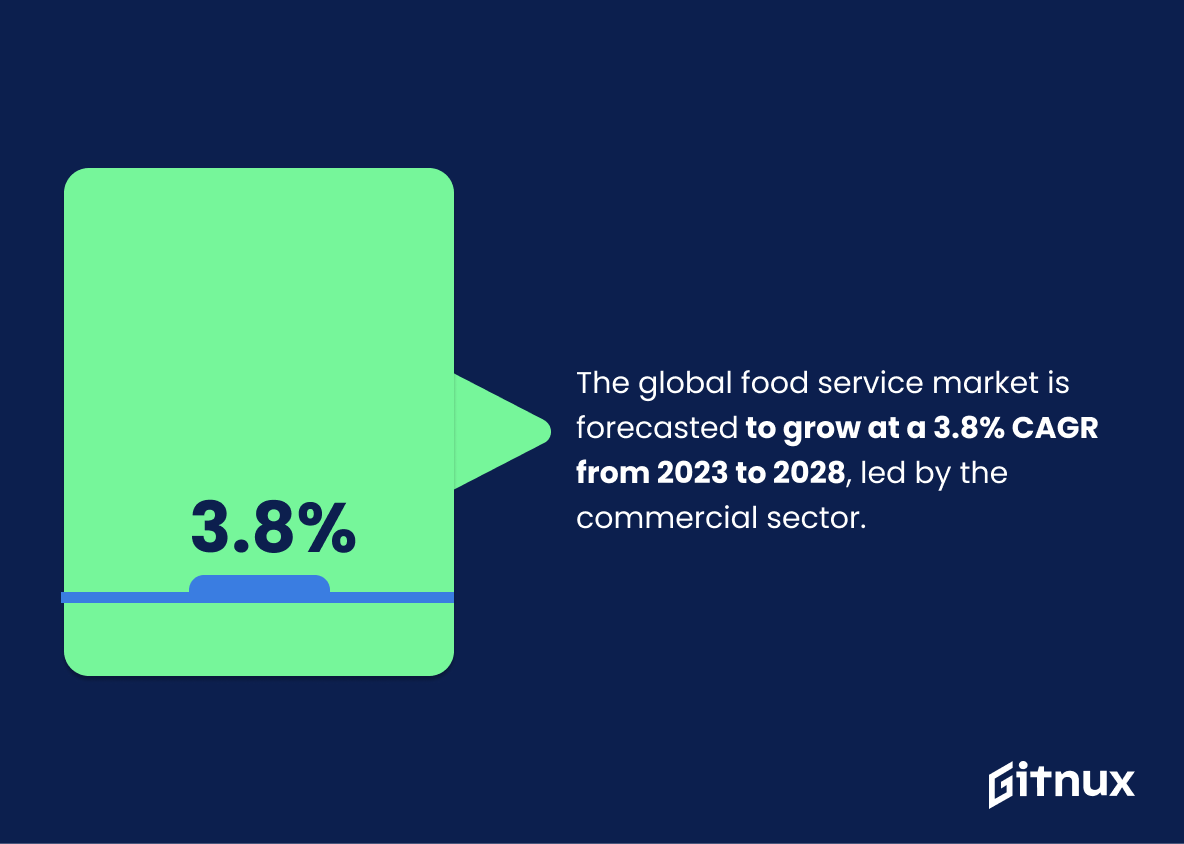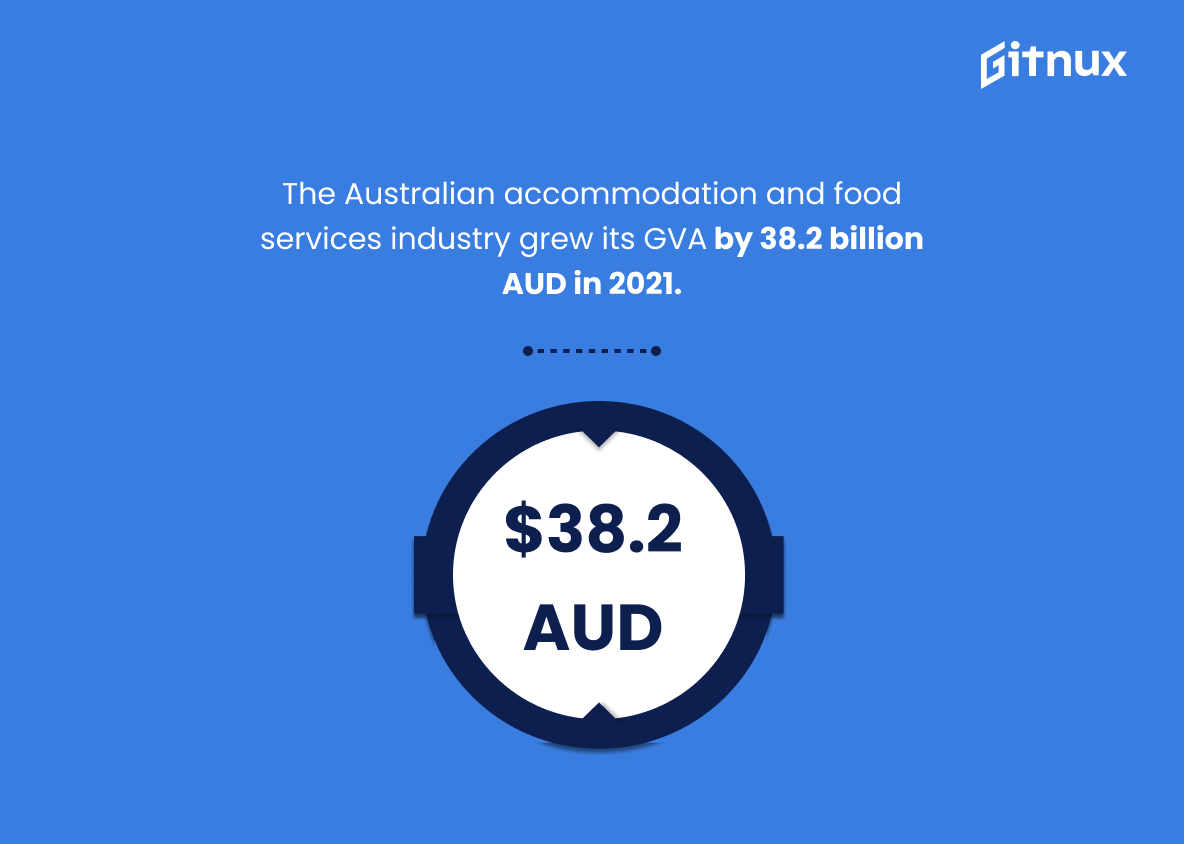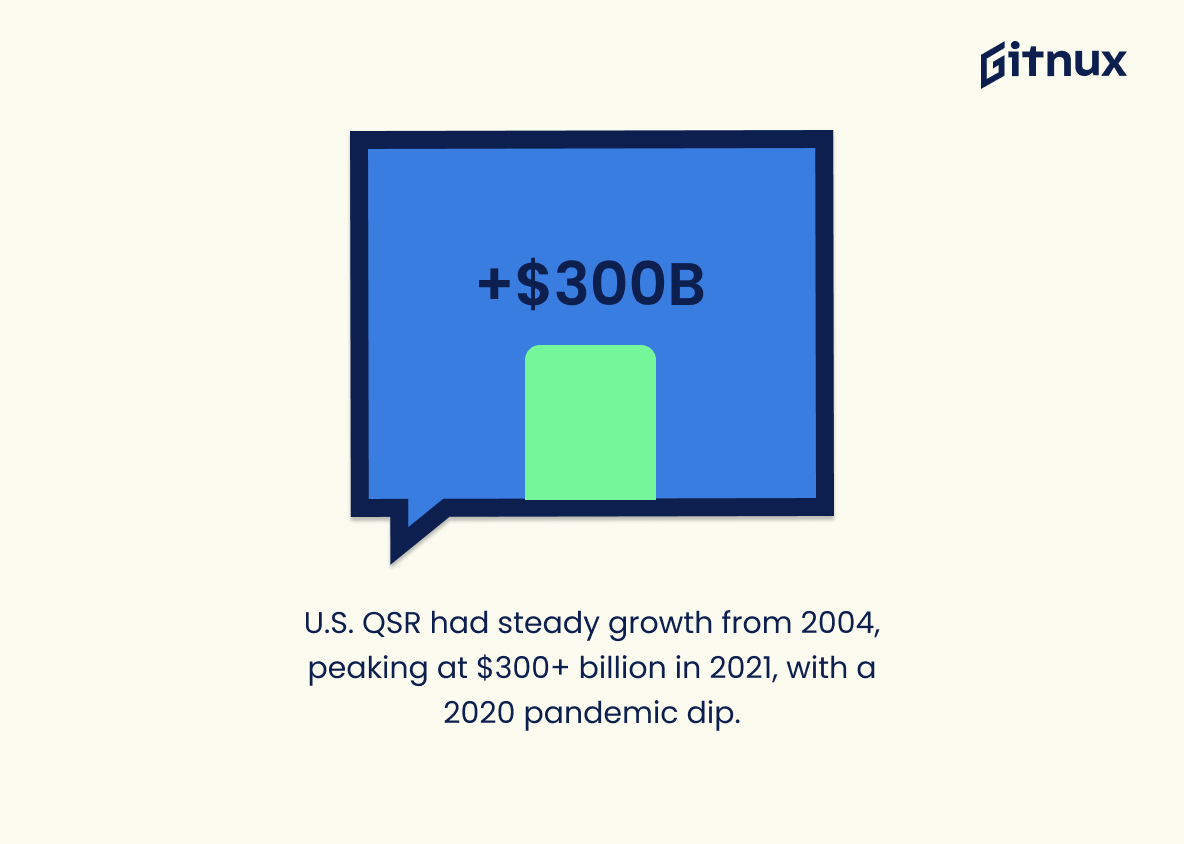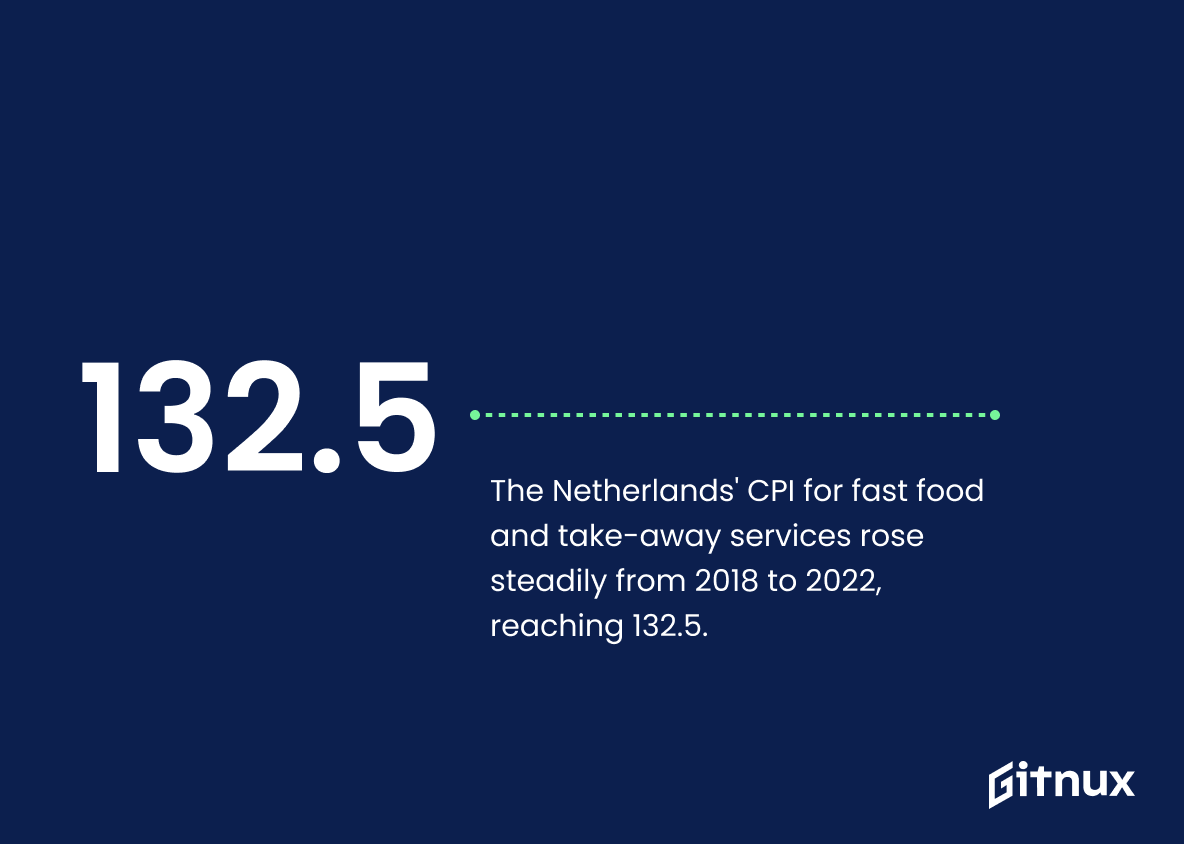The food service industry is a major economic force in the United States, and its impact is felt in virtually every corner of the country. From fast food restaurants to fine dining establishments, the food service industry provides employment for millions of people and generates billions of dollars in revenue each year.
In this blog post, we’ll take a look at some of the most important food service industry statistics, including the size of the industry, its economic impact, and the trends that are shaping the industry’s future. By the end of this post, you’ll have a better understanding of the food service industry and the role it plays in the US economy.
Food Service Industry: The Most Important Statistics
The global online food delivery sector is expected to grow from 130.2 billion U.S. dollars in 2022 to 223.7 billion U.S. dollars by 2027, with a CAGR of 11.44 percent.
The Asian organized food service market shrank 25-40% in 2020 due to COVID-19.
Food Service Industry Statistics Overview
As of September 2021, the U.S. food service industry employed 11.38 million people and generated 72.77 billion U.S. dollars in sales, with the largest share of employment coming from waiters and waitresses.
This shows the size and scope of the food service industry in the U.S. and the importance of waiters and waitresses to the industry. Furthermore, it provides insight into the economic impact of the industry and the importance of the industry to the U.S. economy.
The global food service market is expected to grow from 2.52 billion U.S. dollars in 2021 to 4.43 billion U.S. dollars in 2028, with a CAGR of 9.9 percent.
The food service industry is growing at a rapid rate, indicating that there is a high demand for food services. This could be a great opportunity for businesses in the industry to capitalize on this growth and expand their operations. Additionally, it could be a sign of a strong economy, as people are willing to spend more money on food services.
Influence of the Pandemic on the Food Service Industry
During the pandemic, U.S. restaurants reduced the number of vendors they worked with from 7 to 3, which is significant as 40% of their revenue is spent on ingredients.
The pandemic has strongly impacted the Food Service Industry and the restaurants also have a need to reduce their costs.
Technology in the Food Service Industry
80% of restaurants are turning to technology to reach more customers, 6% of orders are placed via smartphones, and 68% of customers say that a server tablet improves their experience, with online grocery shopping expected to be a $100 billion industry by 2020.
Restaurants are increasingly turning to technology to reach more customers, and customers are responding positively to the use of technology in the restaurant experience.
This suggests that technology is becoming an essential part of the food service industry, and that businesses must invest in technology in order to remain competitive.
In 2020, there were 144.7 thousand food service businesses operating in the UK, an increase from 2008.
This number is indicative of the increasing demand for food services, which can be used to inform business decisions and strategies.
Competition in the Food Service Industry
The pandemic has caused an increase in competition and creativity in the food service industry, leading to more consumers being comfortable with online shopping and delivery, allowing niche brands to enter the market.
The pandemic has created an opportunity for smaller brands to gain a foothold in the food service industry, which could lead to increased competition and more options for consumers.
The global food service market is projected to grow at a CAGR of 10.76% from 2022 to 2029, reaching a total of $5,194.60 billion.
This growth can be attributed to the increasing demand for food services, such as take-out, delivery, and catering, as well as the increasing popularity of food delivery apps.
The global food service market is expected to have a CAGR of 3.8% between 2023-2028, with the commercial sector dominating the market.
The Indian Restaurants and Food Service Industry was valued at 4 trillion Indian Rupees in 2020, with the organized sector growing at a strong rate between 2014 and 2020.
The accommodation and food services industry in Australia saw an increase in GVA of 38.2 billion Australian dollars in 2021 compared to the previous year.
This indicates that the industry is growing and is a positive sign for the industry’s future. It also provides a benchmark for future growth and can be used to measure the success of the industry in the future.
Food Delivery and Fast Food in the Food Service Industry
The global online food delivery sector is expected to grow from 130.2 billion U.S. dollars in 2022 to 223.7 billion U.S. dollars by 2027, with a CAGR of 11.44 percent.
Digital restaurant delivery services increased 67% globally, with the US increasing the most at 123%, due to the coronavirus pandemic.
This highlights the importance of digital delivery services, which have become increasingly popular as people are staying home more often.
The quick service restaurant industry worldwide reached its peak in 2019, decreased in 2020 due to the pandemic, and is forecast to increase in 2022.
The quick service restaurant sector (QSR) in the United States has seen a steady year-over-year growth since 2004, with its peak consumer spending exceeding three hundred billion in 2021, but saw a notable decline in 2020 due to the coronavirus pandemic.
The FAO Food Price Index (FFPI) reached its highest value in 22 years in March 2022, due to the Russian-Ukrainian conflict.
The CPI for fast food and take away services in the Netherlands has increased steadily from 2018 to 2022, with a value of 132.5 in 2022.
Gluten Free Food in the Food Service Industry
The global market for gluten-free food is expected to expand significantly from 6.7 billion U.S. dollars to 14 billion U.S. dollars between 2022 and 2032.
This shows that the demand for gluten-free products is increasing, which means that food service businesses need to be prepared to meet this demand. It also exhibits that the rate of growth in the U.S. is slowing, which means that businesses need to focus on other markets to capitalize on the growing demand for gluten-free products.
The U.S. gluten-free products market is forecasted to almost double in value from 8.79 billion U.S. dollars in 2018 to 16.31 billion U.S. dollars by 2025.
Food service businesses should therefore consider adding more gluten-free options to their menus in order to meet the needs of their customers.
Frozen Foods in the Food Service Industry
Sales of frozen foods in Germany have increased steadily from 1989 to 2021, with a jump from 1.34 million tons in 1989 to 3.77 million tons in 2021.
The global frozen foods market is expected to grow by 40% from 2018 to 2026, increasing from 260.8 billion to 366.3 billion US dollars.
The global food service market is projected to grow at a CAGR of 10.76% from 2022 to 2029, reaching a market size of $5,194.60 billion.
This growth is attributed to the increasing demand for food services due to the Covid-19 pandemic and the shift towards healthier eating habits.
The Food Service Market size was valued at USD 5,348.55 Billion in 2021 and is projected to grow to USD 6,791.31 Billion with a CAGR of 2.82% between 2023 and 2030.
The industry is growing rapidly due to the rise in the millennial working population with changing preferences for ready-to-eat foods and change in taste preferences coupled with the growing need for customized and newer food options.
Changes of Consumer Behavior in the Food Service Industry
The COVID-19 outbreak has caused an increase in home meal replacement, meal-kit consumption, online orders, take-out, and drive-through in the food service industry.
It is clear that the outbreak has caused a shift in the way people are consuming food, with more people opting for home meal replacement, meal-kit consumption, online orders, take-out, and drive-through.
This shift in consumer behavior has had a significant impact on the food service industry, and understanding these changes is essential for businesses in the industry to adjust and remain competitive.
The Restaurants & Food Services Industry Group is dominated by Waiters & Waitresses, Cooks, Food Service Managers, Cashiers, and Food Preparation Workers, who work an average of 42.9 hours per week and earn an average annual salary of $33,576 (part-time employees earn an average of $11,074).
The US Food Service Market is projected to grow at a CAGR of 3.7% over the next five years, despite the effects of the COVID-19 pandemic on the industry.
Food Service Industry in Different Countries
The South Korean foodservice market is projected to register a CAGR of 4.63% over the next five years, driven by increasing Western influence and consumer demand for fusion foods.
It shows that there is potential for growth in the South Korean market, and that restaurants and cafés need to be aware of consumer trends and modify their offerings accordingly.
The Asian organized food service market shrank 25-40% in 2020 due to COVID-19.
This decline in the market is likely to have a lasting effect on the industry, with some countries being even more severely impacted than others.
The Europe Food Platform-to-Consumer Delivery market is expected to grow at a CAGR of 10.52% during the forecast period (2022-2027).
This growth is driven by the increasing penetration of internet connections and smartphones, which provide the option to get food delivered conveniently and quickly.
Germany is the largest market for food and agricultural products in the European Union, with 83 million of the world’s wealthiest consumers.
Germany is therefore a lucrative market for Canadian exporters of consumer-oriented food and agriculture products.
Conclusion
The food service industry is an ever-evolving and growing industry, and the statistics show that it is an industry that is here to stay. With the rise of technology and the increasing demand for convenience, the food service industry is sure to continue to grow and innovate in the years to come.
As the industry continues to grow, it is important to stay up to date on the latest trends and statistics to ensure that businesses are able to stay competitive and profitable.
References
1 – https://www.statista.com/topics/4476/restaurant-and-foodservice-industry-in-the-us/
2 – https://www.statista.com/statistics/1095667/global-food-service-market-size/
3 – https://get.apicbase.com/restaurant-industry-statistics-2022/
4 – https://financesonline.com/food-industry-statistics/
5 – https://www.statista.com/statistics/558058/food-and-beverage-services-number-of-enteprises-uk/
6 – https://commonthreadco.com/blogs/coachs-corner/food-and-beverage-industry-trends
7 – https://www.fortunebusinessinsights.com/food-service-market-106277
8 – https://www.imarcgroup.com/food-service-market
9 – https://www.statista.com/statistics/1252722/india-yearly-value-of-restaurants-and-food-service-industry-by-segment/
10 – https://www.statista.com/statistics/874974/australia-gross-value-added-accommodation-and-food-services-industry/
11 – Global online food delivery market size 2027 | Statista
12 – Digital restaurant delivery growth worldwide by country 2020 | Statista
13 – Fast food restaurant industry market size worldwide 2021 | Statista
14 – QSR sector consumer spending US 2021 | Statista
15 – Food price index worldwide 2022 | Statista
16 – Fast food CPI trends Netherlands 2022 | Statista
17 – https://www.statista.com/statistics/248467/global-gluten-free-food-market-size/
18 – Gluten-free food market value in the U.S. 2014-2025 | Statista
19 – Sales volume of frozen foods in Germany 1989-2021
20 – Global frozen foods market value 2018-2026 | Statista
21 – https://www.fortunebusinessinsights.com/food-service-market-106277
22 – https://www.verifiedmarketresearch.com/product/food-service-market/
23 – https://www.ncbi.nlm.nih.gov/pmc/articles/PMC8636391/
24 – https://www.mdpi.com/2304-8158/11/6/810
25 – https://datausa.io/profile/naics/restaurants-food-services
26 – https://www.mordorintelligence.com/industry-reports/us-food-service-restaurant-market
27 – https://www.mordorintelligence.com/industry-reports/south-korea-foodservice-market
28 – https://www.kearney.com/consumer-retail/article/-/insights/food-for-thought-evolution-of-food-services-post-covid-19-in-asia
29 – https://www.mordorintelligence.com/industry-reports/europe-food-platform-to-consumer-delivery-market
30 – https://agriculture.canada.ca/en/international-trade/market-intelligence/reports/sector-trend-analysis-foodservice-germany
